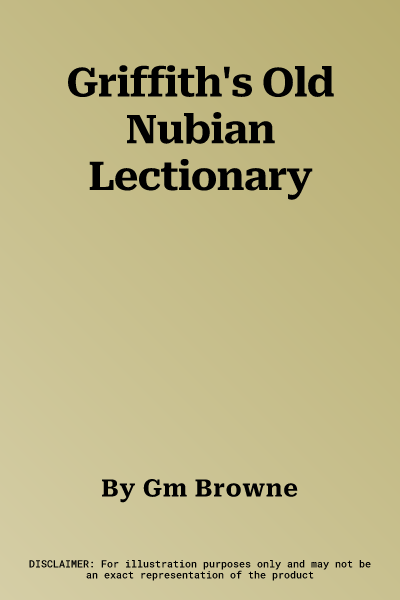In preparing this revision of F. LI Griffith's edition of the Old Nubian
Lectionary, I have endeavoured to eliminate the numerous faults in the
original publication. In addition to frequent errors in transcription,
the text contains restorations that are often anomalous or unsuited to
the space available. The reader is not always told how extensive a
lacuna is, or when the size is given, it may require adjustment. At
times Griffith did not accurately signal the presence of a lacuna:
either he misplaced brackets or omitted them altogether. Further, he did
not usually indicate how many lines of text he assumed were missing from
the end of one page to the beginning of the next, if such indications do
appear, they are not necessarily accurate. In addition, Griffith was not
overly careful in reproducing the supraliteral marks, thereby
obfuscating an orthographic system which is more clearly in evidence in
the Lectionary than is any of the other Old Nubian texts now available.
In my commentary to the revision I note all the instances where I depart
from the text of the edition princeps and whenever necessary I show why
the changes were made. All restorations which I introduce into the text
I attempt to justify or at least to explain in the notes. I have sought
to be more accurate than was Griffith in indicating supraliteration, in
measuring lacunae, and in gauging the amount to text presumed missing
between pages. Since Griffith did not include a translation, our chief
clue as to how he understood the Nubian lies in the interlinear Greek
version which he added to his transcription. Not infrequently his
version is misleading. After much hesitation I have decided to juxtapose
to the Nubian text what could have been its Greek model, but I must urge
extreme caution in making deductions from it. I follow the text of
Nestle-Aland, Novum Testamentum Graece and introduce variants only when
the Nubian seems to warrant it. But the Nubian version is not always
literal, and its interpretative tendencies make it unrealistic to assume
that we can in every case reconstruct the underlying Greek (see
e.g.104.6-7 ad Rom 11:26 and 112.10-11 ad Gal 4:5).

